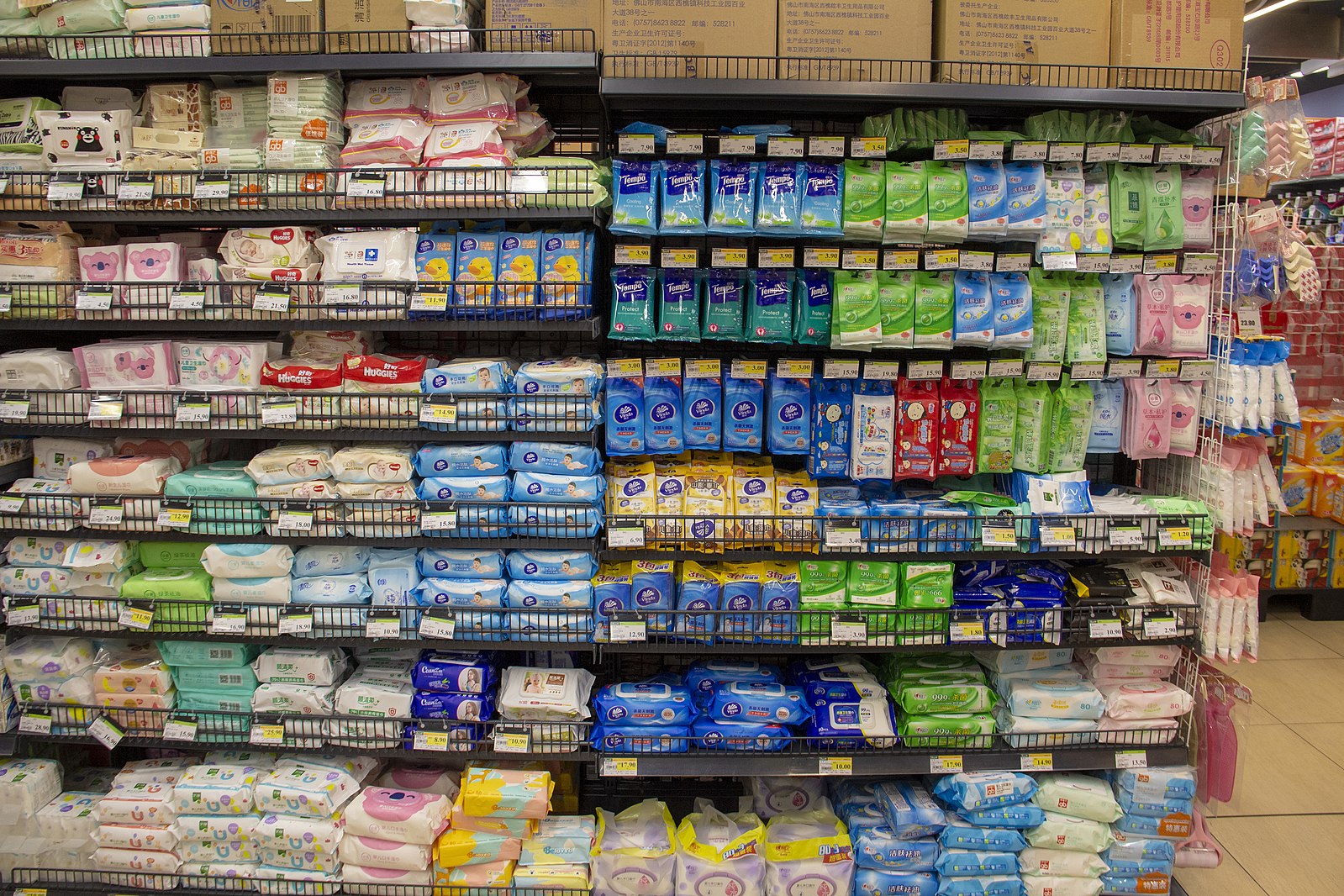11.2.5: Solid Waste Management
- Page ID
- 72714
Section Hook
Flushable wipes, are flushable right? No. Over and over, plumbers and waste water treatment workers state that they do not degrade fast enough and clogs drains and sewers across the globe. Not all flushable wipes are created equal, and some are better than others. Unfortunately, there are no legal requirements these products are required to passed to be called flushable, and the only guiding body is the integrity of the company manufacturing the wipes. If you want advice about your body you go to your doctor. If you want advice about your pipes, talk to your plumber. They will tell you that the only things that should go down your toilet are the 3 P’s, pee, poo, and (toilet) paper.

Figure \(\PageIndex{a}\): Wipe isle at the store. Image by 維基小霸王 in Wikimedia Commons (CC-BY-SA4.0)
Attribution
Modified by Rachel Schleiger (CC-BY-NC).


